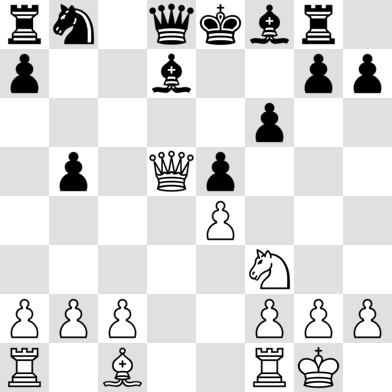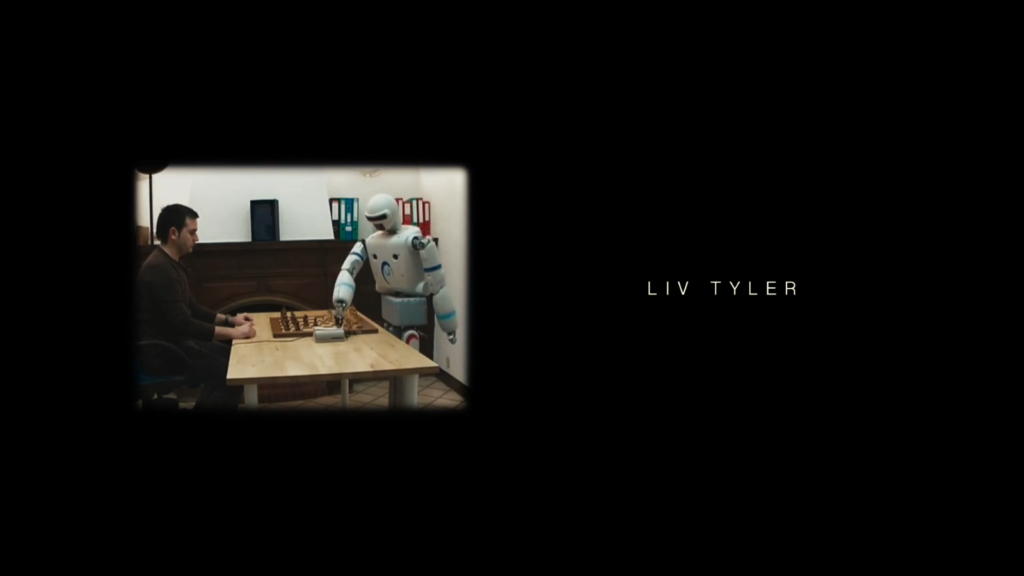Last week, we talked about one of the most well-known movies of all time. Today, we look at a far lesser known one: Robot & Frank, a 2012 movie about Frank, an old man living on his own whose son gives him a robot to nudge him towards a healthier and more fulfilling life. He is quite hostile to the idea, until he finds out that the robot could help him to go burgling again. It’s a pretty good movie: well-written, great actors, funny, clever, touching. And when the credits roll and you think it’s all over, you get to the best bit:
Yes, the robot is playing chess during the ending credits! Probably a new ploy to make sure people keep watching until the last stagehand’s name has scrolled all the way up. Surprisingly, he’s not playing against Frank, but still: he’s playing.
Right before the still frame shown above, we get a nice, close look at the board.1 Unfortunately, some squares on black’s queen’s side are cropped out, but I strongly suspect that the position is this one:2
 White, i.e. the robot, has just played Qd5, slyly setting up a double attack on his opponent’s two rooks. At the moment, he is down a bishop for a pawn, but that was probably a sacrifice to set up this little tactic. Quite possibly, white had a bishop on b3 or c4 which has taken a knight on g8.
White, i.e. the robot, has just played Qd5, slyly setting up a double attack on his opponent’s two rooks. At the moment, he is down a bishop for a pawn, but that was probably a sacrifice to set up this little tactic. Quite possibly, white had a bishop on b3 or c4 which has taken a knight on g8.
But the weirdest thing is the absence of white’s queen’s knight. I have been able to make a more or less believable reconstruction3 of this position — except that white still has that knight! How on Earth did it disappear? Who took it? Did Frank surreptitiously steal the steed?
Realism: 3/5 This is quite plausible. The pawn on f6 looks really weird, but a beginner might react with f6 to the attack on his e-pawn.
Probable winner: White. He will be up an exchange and a pawn for nothing much. He can only lose is his opponent invokes the second law of robotics.
1. [That’s the third time in a row! Is this a trend?]↩
2. [There’s also a robot that can help you! Just with diagrams, but still…]↩
3. [More less than more, to be honest. Here it is: 1. d4 c5 2. dxc5 d6 3. cxd6 e6 4. e4 e5 5. d7+ Bxd7 6. Nf3 f6 7. Bc4 b5 8. Bxg8 Rxg8 9. Qd5]↩
